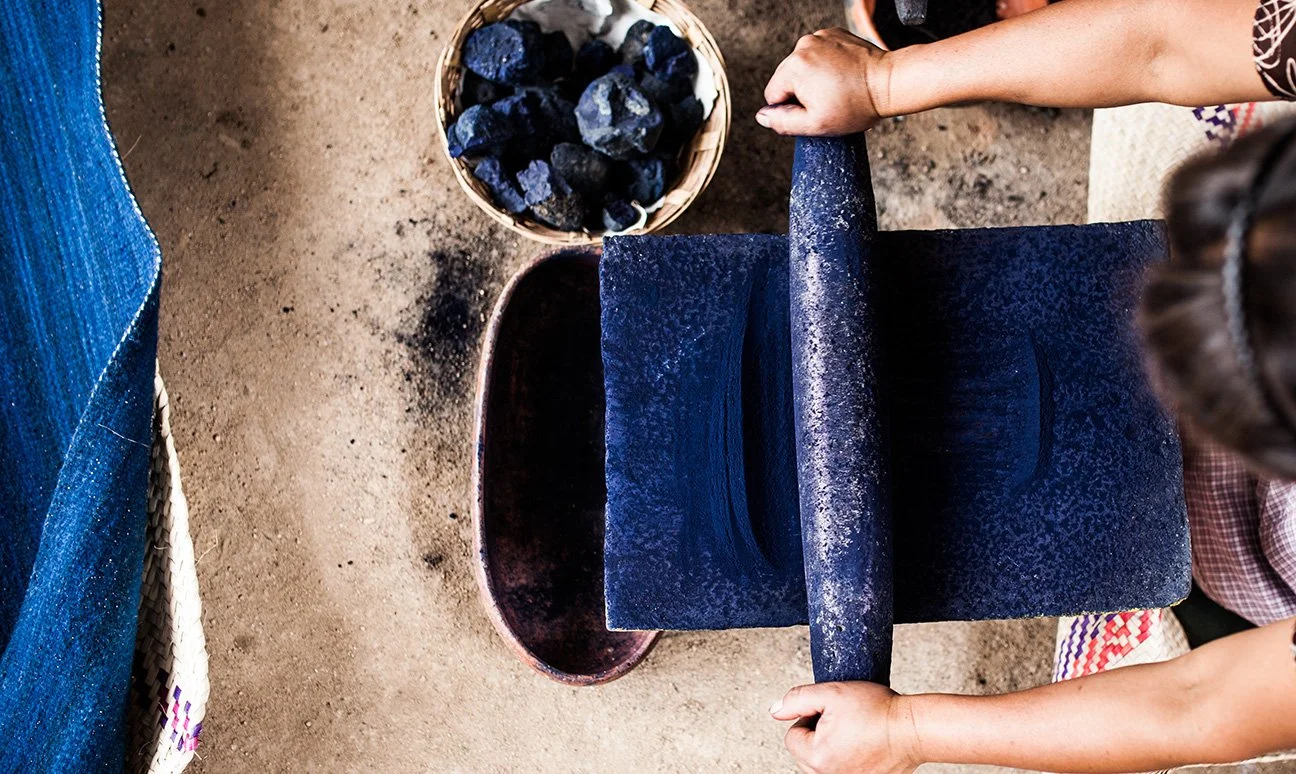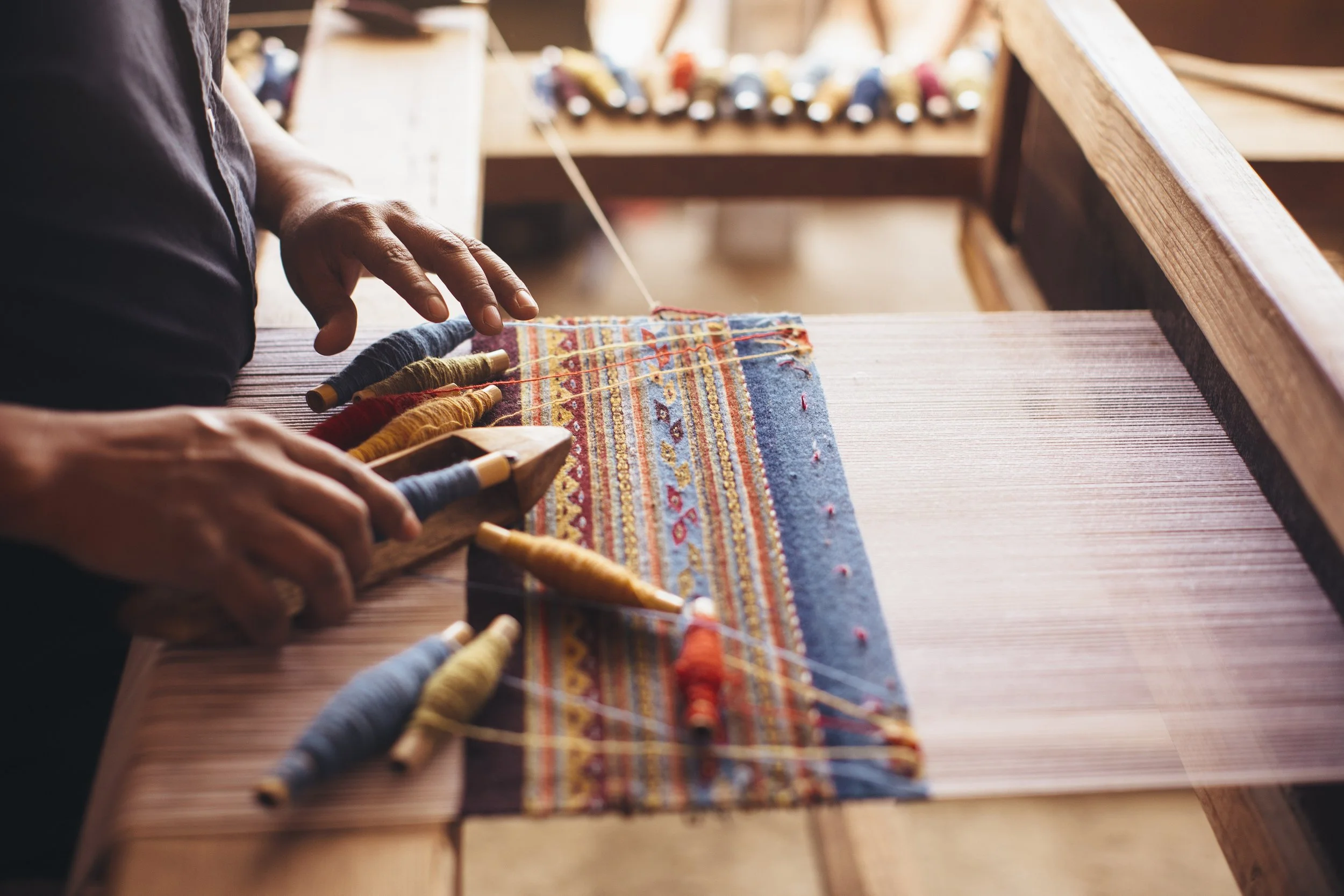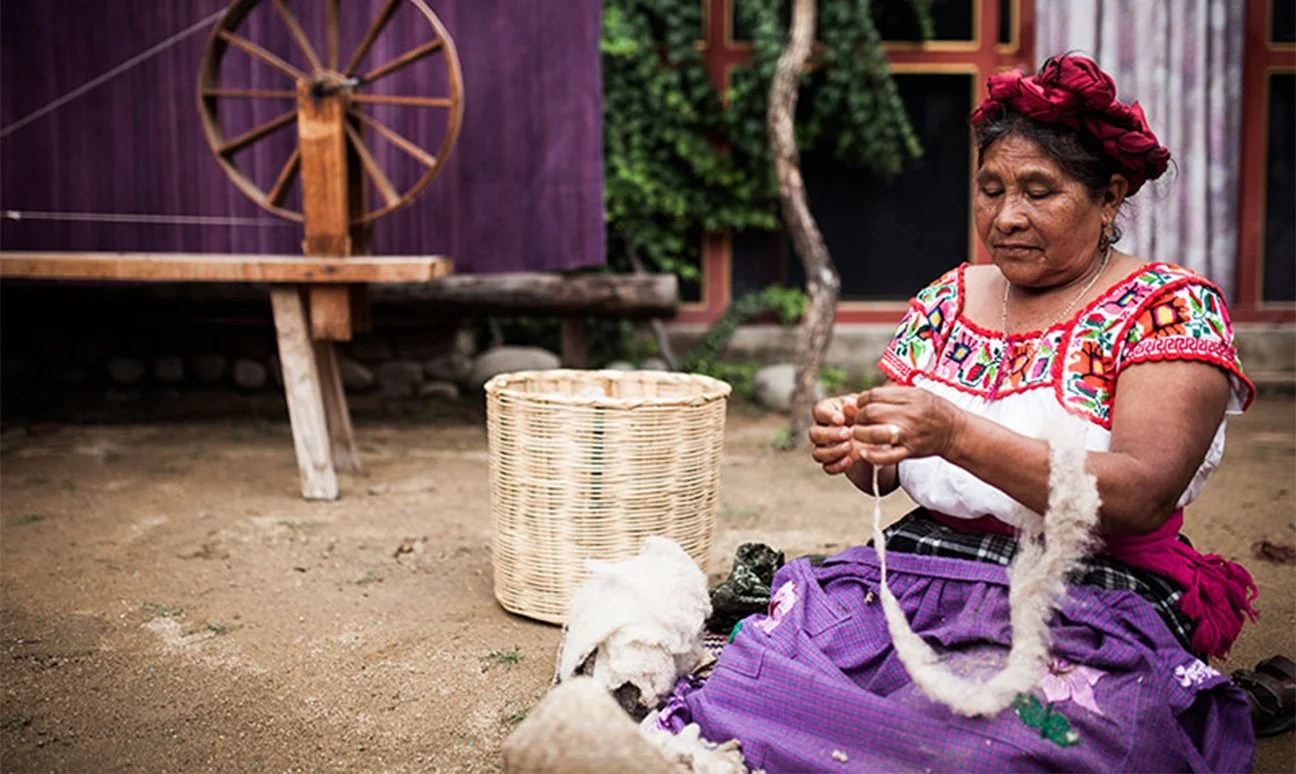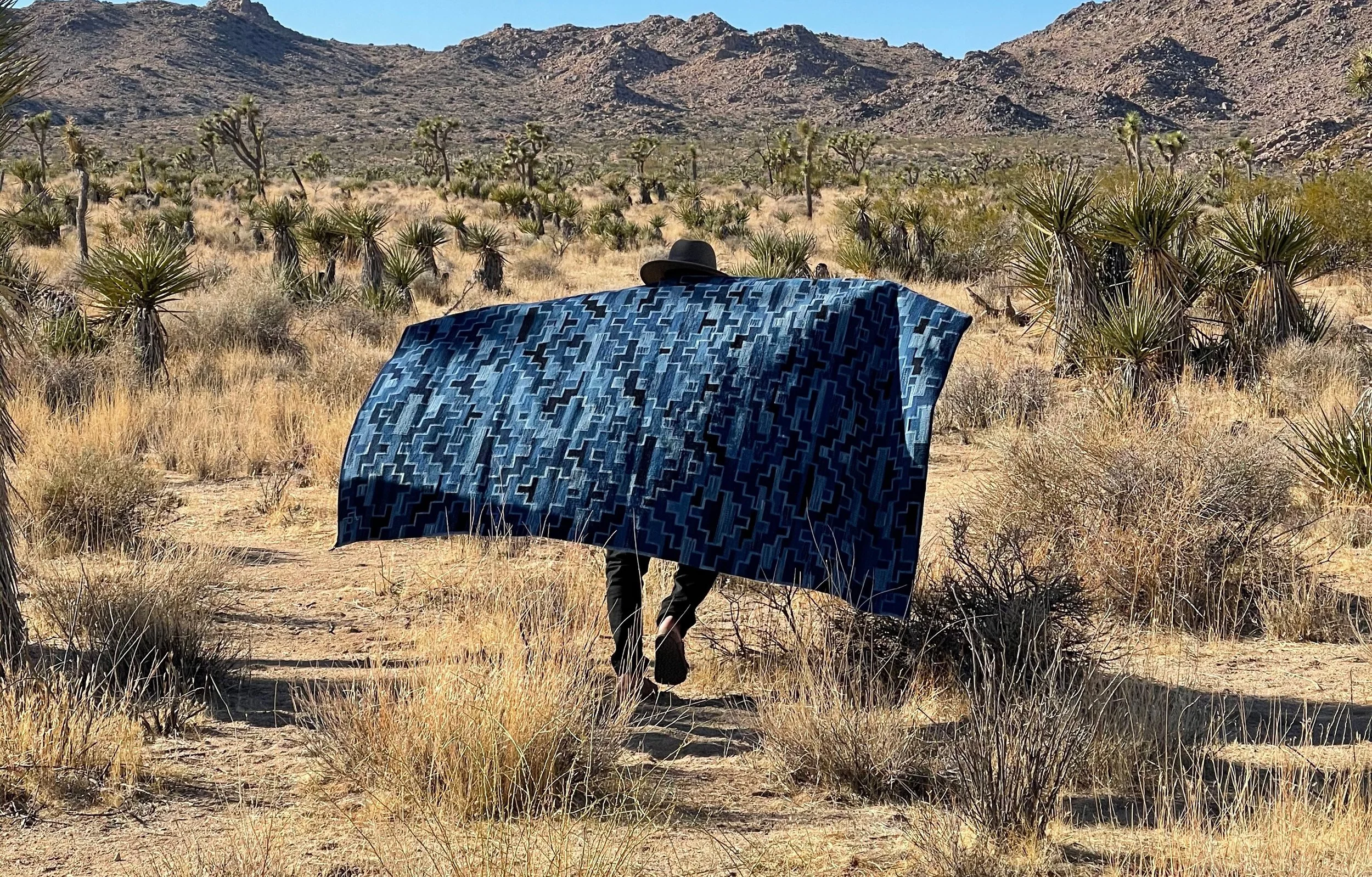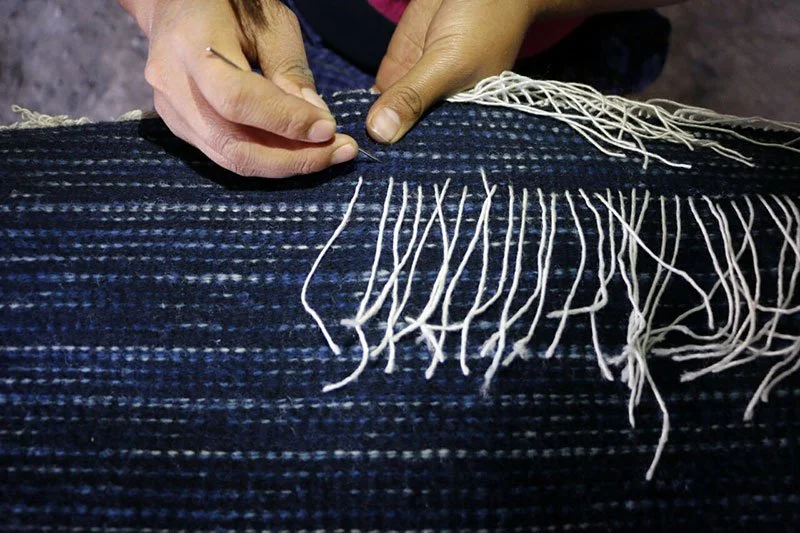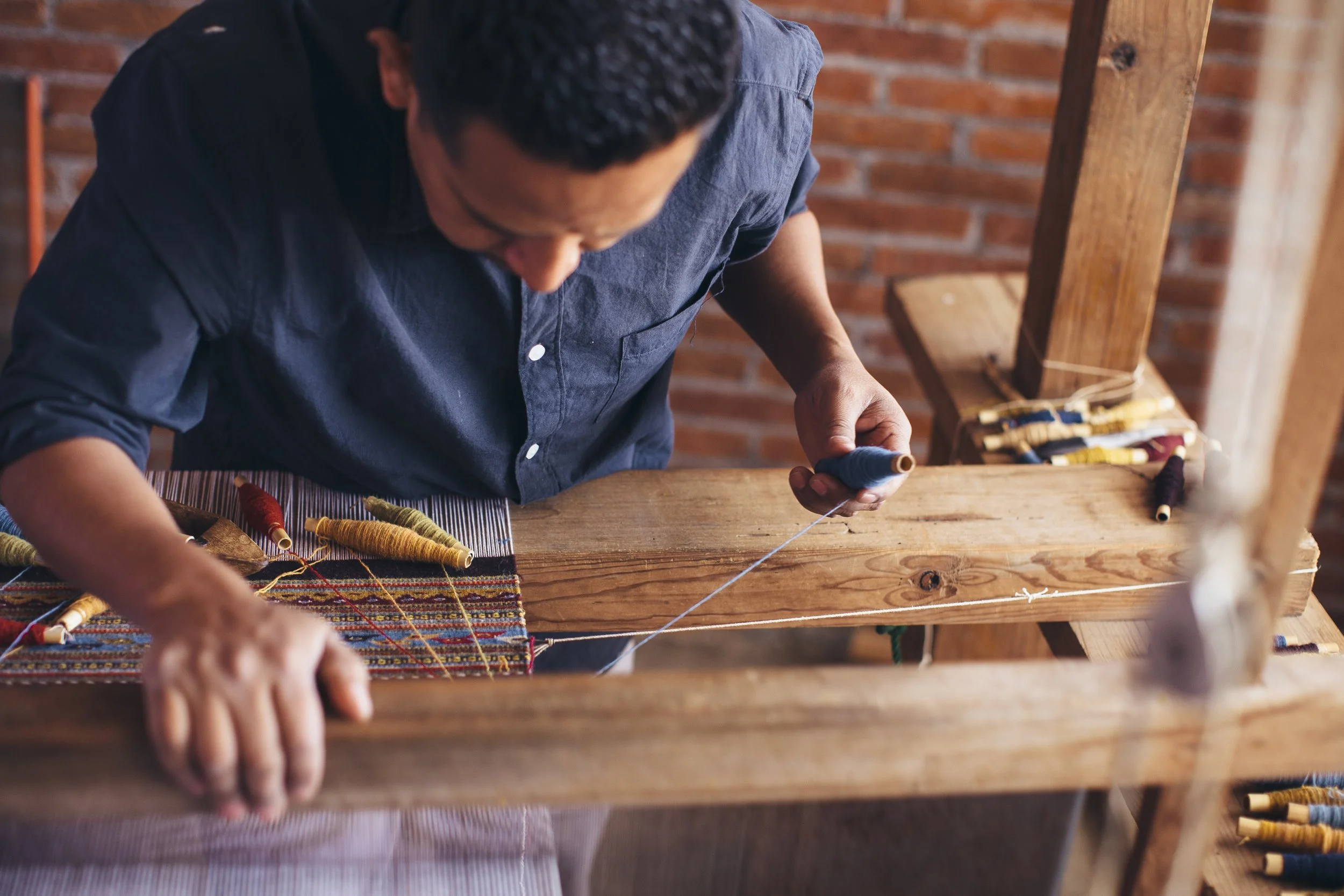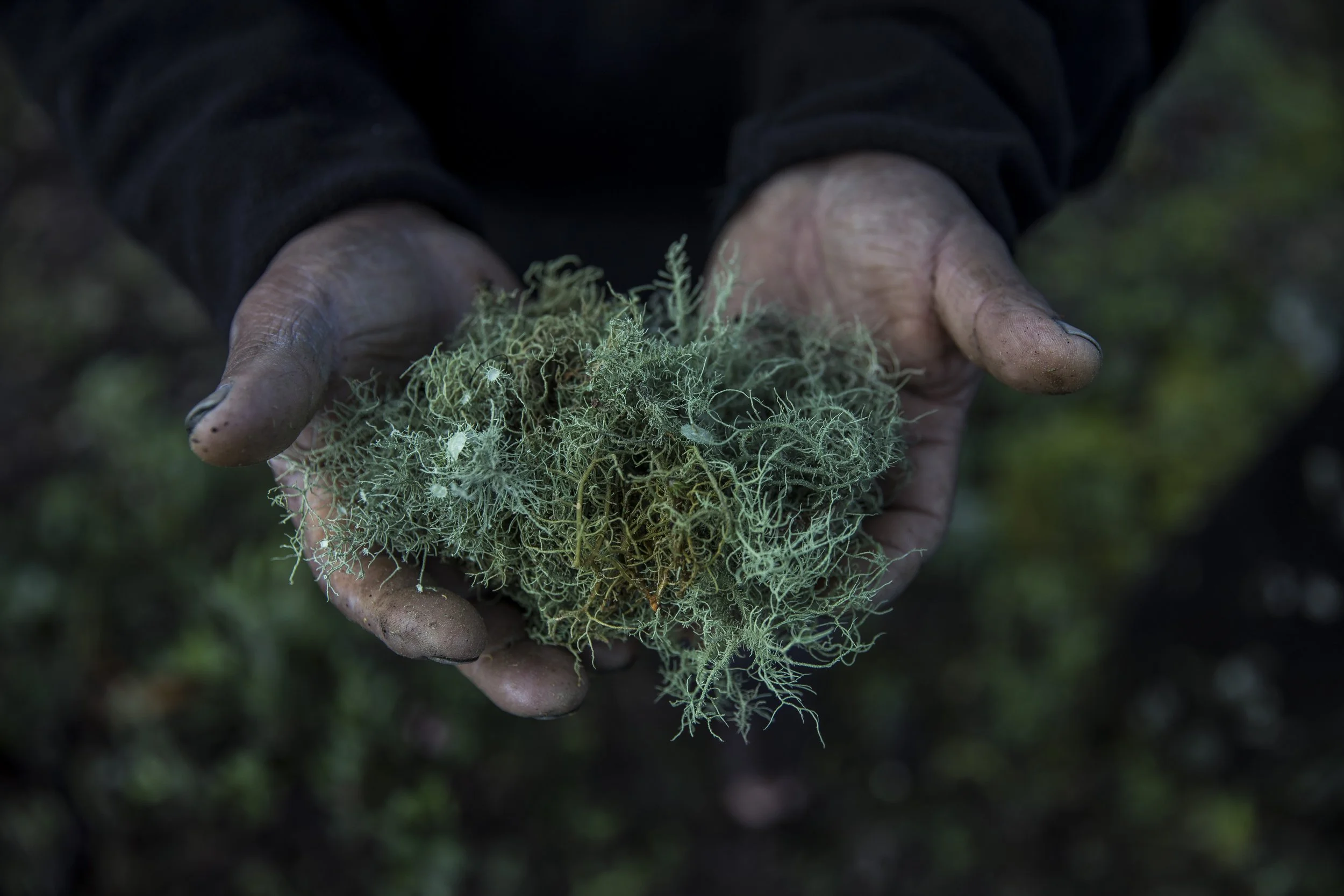
NATURAL DYES
Porfirio's artistic practice is guided by a profound spiritual belief that nature is a living being, and divine. His raw materials come from the natural world, and his artistic practices revolve around the cycles of nature.
Each piece of textile made in Gutierrez studio is an imprint of each season.
The Creative Process
processing raw wool
Wool for spinning into yarn is from sheep which were originally brought to the Americas by the Spaniards. The sheep are typically sheared once a year. The newly shorn wool must be washed and thoroughly cleaned. This is usually done in the river using the root of amole, the indigenous soap plant. Burrs, plant matter and other debris are picked out by hand.
spinning yarn
When the wool is clean and dry, it is combed with carding paddles to separate, clean, and align the fibers before it is spun into yarn on manually powered spinning wheels. After the wool has been made into yarn, it is boiled in potassium alum, a naturally occurring mineral that helps to fix the dye colors to the yarn. Then the yarn is ready to dye.
design process
Inspiration
The idea for a body of work usually started by researching the various subjects the artist will like to meditate on; ceremonies, techniques, stories, materials, migration, and the overall worldview of the ancient Zapotec culture and the Californian modernity ways if life is the source of creativity that is manifested in Porfirio's work.
A sketch is first made to help clarify complex patterns and/or determine what colors of yarn will be needed. Below are three steps in the creation of a new piece; a sketch, weaving the design, and the finished piece.
weaving
The looms used at Porfirio Gutiérrez studio are upright pedal looms. A weaving is created by passing a bobbin or shuttle through the warp threads, shifting the warp threads with the foot pedals, and repeating. As the design calls for different colors, bobbins with individual colors are passed through the warp for the length required to make the patterns. Sometimes dozens of bobbins with different colors of yarn are in play at one time. Often the looms gets modified to satisfy the needs of a specific material or design.
final touches
When a piece is finished, the warp threads are cut to remove it from the loom. The piece is cleaned and then the long warp threads are “finished” to assure the weaving does not unravel. This can be done by threading them back into the weaving, by knotting the warp threads in a macramé pattern, by twisting together the warp threads, or by braiding them. The weaving is then washed, blocked and dried. Once it is dry, it is scrutinized for any irregularities and brushed for a consistent texture before it is presented as a finished piece.
